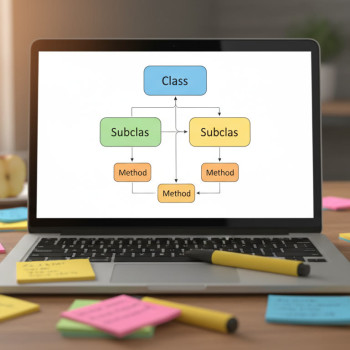AP vs SAT: A Friendly Guide for Future Business Students
Thinking about business? Maybe economics and statistics excite you, or you picture yourself building spreadsheets, forecasting sales, or explaining markets in class. If you re planning your high school and test strategy, two names will come up constantly: the AP (Advanced Placement) courses and exams especially AP Economics and AP Statistics and the Digital SAT, with its Quant and Verbal sections. Both matter to colleges and to your own readiness for business coursework.

Why this comparison matters
AP classes give you subject depth and the chance to earn college credit. The SAT assesses general readiness reading, reasoning, and math skills on a single, standardized scale. For business hopefuls, AP Economics and AP Statistics teach domain knowledge you ll use in major coursework, while SAT Quant and Verbal test the underlying skills colleges use to compare applicants from different schools.
Quick snapshot: What each test/course does for a business applicant
| What You Take | Primary Focus | Value for Business Majors |
|---|---|---|
| AP Microeconomics / AP Macroeconomics | Market behavior, supply and demand, macro policy, national income | Direct introduction to economic thinking; shows subject interest and readiness |
| AP Statistics | Descriptive stats, probability, inference, regression | Teaches data literacy and inference key for business analytics |
| Digital SAT (Quant) | Algebra, problem solving, data interpretation, some geometry | Assesses quantitative reasoning used in business math and analytics |
| Digital SAT (Verbal) | Reading comprehension, evidence-based analysis, grammar at the sentence level | Measures communication and analytical reading important for case studies and writing |
Deep dive: AP Economics and AP Statistics what they teach and why they matter
AP Economics (Micro and Macro)
AP Economics is less about memorizing numbers and more about thinking like an economist. Microeconomics digs into how consumers and firms make decisions and how markets allocate resources. Macroeconomics zooms out to unemployment, inflation, monetary and fiscal policy, and economic growth. For business students, AP Econ builds intuition: supply and demand analysis, elasticity, market structures, and the causes and consequences of policy decisions.
Why admissions and professors value it:
- Shows interest in economic reasoning and current events.
- Prepares you for introductory college-level econ courses you ll recognize graphs, models, and tradeoffs.
- Demonstrates analytical thinking and the ability to apply concepts to real-world scenarios.
AP Statistics
AP Statistics is a practical course. It introduces the language of data: variability, distributions, sampling, tests of significance, confidence intervals, and basic regression. In an era where data drives decisions, AP Stats gives you the tools to read research, question claims, and make evidence-based decisions all central to modern business.
Benefits for a business trajectory:
- Strengthens data literacy vital for marketing analytics, finance, and operations.
- Teaches experimental design and interpretation useful for internships and research projects.
- Often reduces the need for an introductory stats course in college (depending on credit policies).
Deep dive: Digital SAT Quantitative and Verbal skills that matter for business
SAT Quantitative (Quant)
Sat Quant assesses problem solving, algebraic reasoning, and data interpretation. While it doesn t dive into calculus or advanced statistics, it tests the kind of quantitative reasoning you ll use in finance, accounting, and analytics classes. Speed and accuracy matter, but so does translating real-world problems into math an essential business skill.
SAT Verbal (Evidence-Based Reading and Writing)
The Verbal (often called Evidence-Based Reading and Writing) measures comprehension, interpretation of texts, and command of standard written English. Business students must analyze reports, interpret case studies, write memos, and present arguments. Strong SAT Verbal skills signal you can read complex material quickly and communicate clearly.
How AP and SAT overlap and where they diverge
There s genuine overlap: AP Statistics and SAT Quant both test comfort with data, percentages, and interpretation. AP Economics and SAT Verbal both demand reading comprehension and the ability to apply concepts to scenarios. But their aims differ.
- Scope vs. depth: SAT measures general readiness and comparable skills across applicants. AP courses measure depth in a specific subject.
- Content vs. skill: AP exams test subject content and applications in economics or statistics. SAT evaluates transferable skills reasoning, interpretation, and problem solving.
- College credit vs. admissions signal: AP scores can translate to college credit or placement. Strong SAT scores are used widely for admissions and scholarship considerations.
Which should you prioritize if you want to major in business?
Short answer: both but your school profile, strengths, and college targets matter.
Consider these scenarios:
- If you love numbers and plan to pursue finance, analytics, or economics, AP Statistics plus AP Macroeconomics/Microeconomics is a powerful combination. It shows depth and gives you tangible, subject-specific preparation.
- If your quantitative foundation needs shoring up, prioritize SAT Quant practice to ensure your overall application is competitive SAT scores remain a broad filter in many admissions processes.
- If your reading and writing are your weaker areas, invest time in SAT Verbal while taking AP classes to demonstrate interest and improvement.
In practice, a balanced approach works best: take at least one AP that aligns with business (Stats or Econ) and prepare for the SAT so your application has both subject depth and strong standardized-skill measures.
How colleges interpret these signals
Admissions committees look for: rigorous coursework, strong performance, and standardized scores that place you in context across thousands of applicants. AP courses show you challenged yourself academically in specific subjects; good AP scores can sometimes earn you college credit or place you out of introductory courses (depending on the college). The SAT provides a consistent scale colleges use to compare applicants from different schools and backgrounds.
For business applicants, departments also pay attention to demonstrated interest and aptitude. APs in Econ and Stats are direct evidence. High SAT Quant and Verbal scores demonstrate the raw skills you’ll need across the curriculum.
Study strategies: blending AP and SAT preparation
1. Start with a diagnostic and goals
Begin by assessing where you stand. Take a practice SAT (digital format if possible) and a few AP-style practice problems in the subjects you plan to take. Identify gaps: is it algebra fluency, reading speed, graph interpretation, or conceptual understanding in economics?
2. Build a study plan that layers skills
Design a weekly plan that alternates:
- Content days: deep dives into AP topics (e.g., sampling methods, elasticity).
- Skill days: SAT-style practice timed sections, evidence-based reading strategies, and quantitative reasoning drills.
- Integration days: apply SAT problem-solving techniques to AP-like questions (and vice versa) so your reasoning becomes flexible.
3. Practice active reading and data interpretation
Both AP and SAT reward active reading. For passages and charts, practice annotation, summarizing main points in one sentence, and asking: “What s the author s evidence? What assumptions are present?” These habits pay dividends across Verbal and AP exam free-response sections.
4. Use past AP Free-Response-style questions to sharpen explanations
AP free-response questions train you to craft concise, evidence-based explanations exactly what many college business classes expect. Practice writing quick, structured answers: state your claim, show work or evidence, and conclude with the economic intuition or statistical interpretation.
5. Take full-length practice SATs under test conditions
Timed stamina matters for the SAT. Schedule regular full-length tests to simulate the testing experience and to refine pacing strategies. Review every mistake: was it content, misreading, or time pressure?
Sample weekly study plan (8 12 weeks out)
| Day | Focus | Example Activities |
|---|---|---|
| Monday | AP Content (Statistics) | Read chapter on sampling distributions; do practice problems; short written summary |
| Tuesday | SAT Quant Practice | Timed problem set (algebra and data), error review |
| Wednesday | AP Economics | Graph practice: supply/demand shifts and short written explanations |
| Thursday | SAT Verbal Practice | Passage practice and vocabulary-in-context exercises |
| Friday | Integrated Practice | Work on AP-style free-response, timed; turn it into a sharp SAT-style evidence response |
| Saturday | Full Practice Section | One full SAT section or one full AP practice section; review mistakes |
| Sunday | Rest and Reflection | Light review: flashcards, summary notes, plan for next week |
Real-world examples: translating test skills to business tasks
Imagine three short scenes where AP and SAT skills shine:
- Marketing internship: You analyze A/B test results. AP Statistics helps you understand significance and confidence intervals, while SAT Quant helps with translating percentages and rates into business actions.
- Microeconomics class: You read a complex case study about a monopolistic firm. AP Econ gives you the vocabulary and models to dissect the case; SAT Verbal helps you extract the author s assumptions and evidence quickly.
- Consulting-style project: You write a concise memo interpreting sales trends. AP Stats helps with the regression interpretation; SAT Verbal makes your explanations clear and persuasive.
How personalized tutoring can fit in where Sparkl helps
All of this can feel overwhelming. That s where personalized tutoring can make a difference. Sparkl s personalized tutoring model 1-on-1 guidance, tailored study plans, expert tutors, and AI-driven insights helps you create a plan that bridges AP content and SAT skills. Tutors can help you:
- Diagnose weak spots and focus study time efficiently.
- Practice AP free-response prompts with targeted feedback to build clarity and precision.
- Train SAT pacing and strategy so you don t leave easy points on the table.
With regular check-ins and adjustments, personalized support reduces wasted effort and keeps progress steady. A tutor can also help make the learning process less stressful and more enjoyable so you keep the curiosity that likely drew you toward business in the first place.
AP credit and college placement: practical considerations
Many colleges give credit or placement for high AP scores. For a business student, that might mean skipping an introductory statistics course or placing out of an introductory economics course freeing time for more advanced electives or internships. Policies vary widely by institution, so if you have target colleges in mind, check their AP credit rules early in the process.
Note: even if a school doesn t award credit, AP courses still strengthen your transcript and show you’re serious about the subject. They re also useful when seeking competitive internships employers like to see measurable preparation.
Common pitfalls and how to avoid them
- Relying on memorization for AP exams: Economics and Statistics reward conceptual understanding and the ability to apply ideas to new situations. Practice with varied problems.
- Ignoring timing on the SAT: Small timing habits compound into big point differences. Practice under simulated conditions.
- Trying to do everything alone: targeted, personalized help (like Sparkl s tutoring) can shorten the path to improvement.
- Overloading on APs without depth: quality matters. A few well-chosen APs with strong scores beat many rushed ones.
Putting it all together: a suggested roadmap for a strong application
Here s a practical sequence if you re aiming for a business major and want both AP depth and strong SAT scores:
- Junior year spring: Take AP Stats or AP Micro/Macro if available; start SAT prep and a diagnostic digital SAT test.
- Summer before senior year: Intensify SAT practice (full-length tests) and review AP materials; consider 1-on-1 tutoring for targeted weaknesses.
- Senior year fall: Sit for the SAT (if required or helpful for scholarships) and finalize AP exam preparation for the spring exam dates.
- Apply with a portfolio that highlights AP coursework in Econ/Stats, solid SAT Quant and Verbal scores, and any relevant projects or internships.
Final thoughts: strategy, not stress
AP Economics and AP Statistics give you subject-specific confidence and real tools you ll use as a business student. The SAT especially strong Quant and Verbal scores signals to colleges that you have the foundational skills to succeed. The best applicants combine both: rigorous coursework and demonstrated standardized skills.
Don t let test prep become a source of burnout. Focus on smart practice, integrate learning across tests, and use targeted support when you need it. Programs with 1-on-1 guidance, tailored study plans, and data-driven feedback like Sparkl can help you optimize study time and maintain momentum without losing sight of the bigger goal: preparing for college and for work you ll love.
Parting advice
Pick the strategy that fits your strengths, interests, and college targets. If you re excited by math and data, lean into AP Statistics and sharpen SAT Quant. If economic reasoning fascinates you, take AP Micro and Macro and use SAT Verbal practice to strengthen your reading and communication. And remember: learning how to think clearly, quantitatively, and empathetically matters more than any single score.

You ve got this. With intentional practice, smart choices, and the right support, APs and the SAT can be stepping stones to a meaningful and successful business education.
















No Comments
Leave a comment Cancel